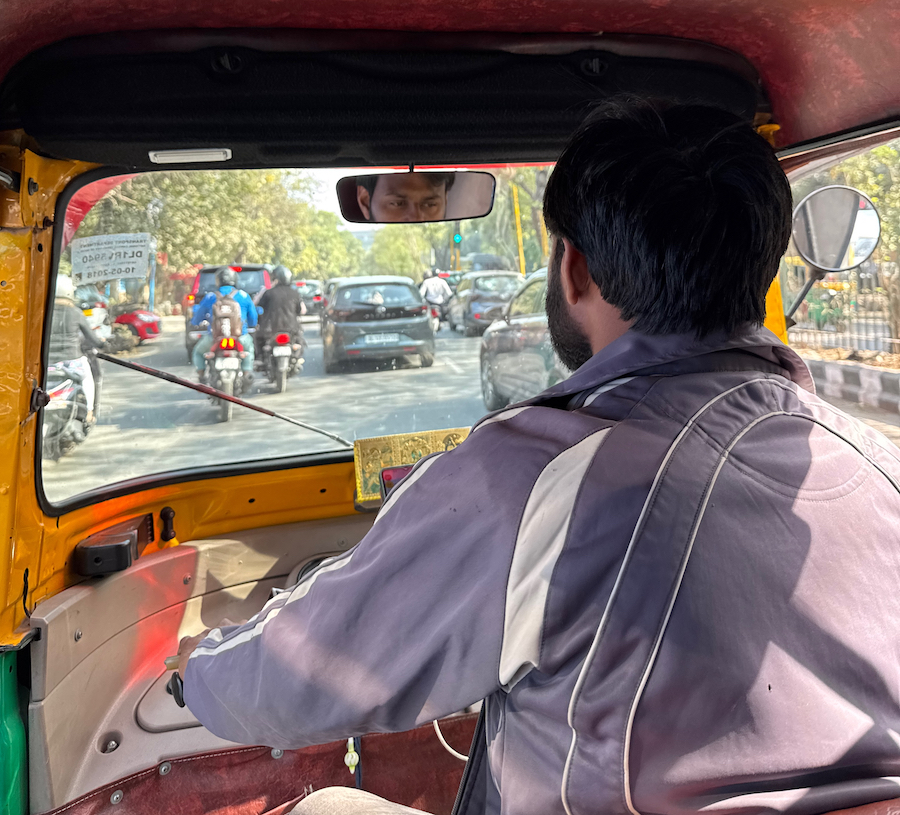When the State Goes Digital

Over the past decade, India’s platform economy has undergone a tectonic shift. Aggregator apps now underpin urban life. Ride-hailing giants like Uber, Ola, and Rapido have become as common as auto rickshaws once were. But behind the sleek interfaces lie familiar fractures: labor exploitation, opaque algorithms, fare volatility, and the slow erosion of workers’ rights.
Across India, gig workers have mounted protest after protest for fairer working conditions. One notable example was the “No AC” campaign, where drivers refused to switch on air conditioning—an act of quiet defiance against fares too low to cover fuel. Meanwhile, consumers have turned on the platforms too. India’s Consumer Protection Authority recently issued notices to Ola and Uber over reports that fares differed depending on whether the user was on Android or iOS.
In response to this disillusionment, the state stepped in. A handful of public-backed platforms emerged to offer an alternative. Chief among them was Kerala Savaari, launched in 2022 and hailed as India’s first government-run ride-hailing app. With fixed fares, reduced commissions, and social security for drivers, it seemed for a moment that a different kind of platform was possible—one rooted in equity, not extraction.
But ideals, as it turns out, don’t scale. Kerala Savaari folded quietly in late 2024, undone not by market backlash, but by the state’s own failure to sustain what it had started. Underfunded, poorly marketed, and technologically stagnant, the platform couldn’t compete. The government had tried to build a twenty-first-century app with twentieth-century tools.


As a 2025/2026 Research Fellow at the Institute for the Cooperative Digital Economy, I’ll study what went wrong —not just in Kerala, but across a wave of global experiments where the state attempted to build such alternatives. And I will study why it worked elsewhere. The Indian case is revealing not because it failed, but because of how it failed.
One obstacle was regulatory drift. In Kerala, the state launched Kerala Savaari—a localized, accessible, and non-exploitative public alternative. Promoted by Kerala’s Motor Workers Welfare Fund Board, the app lacked a clear governance framework, an institutional roadmap, or any long-term strategy for embedding public tech within the broader digital ecosystem. Even its worker-centric ambitions rang hollow; there was no defined role for worker collectives, no scaffolding for collective agency.
Funding exposed another fault line. Unlike VC-backed giants that hemorrhage capital to corner market share, Kerala Savaari had to live within the austerity of annual government budgets and the unforgiving glare of public accountability. There was no war chest, no loss-leading strategy, not even a provisional plan to scale investment while private platforms barreled ahead in a full sprint for market dominance.
Design, too, became a tripwire. In the attention economy, convenience is king. Kerala Savaari’s app was sluggish, marred by technical glitches and lags. Eventually, both users and drivers abandoned it.
Compare this to China’s Shouqi Yueche, a state-owned ride-hailing platform that now operates in over 130 cities and serves more than 113 million users. Or to Taxi.Rio in Brazil, which serves 38,000 monthly users and offers a stable, public-facing alternative. These platforms succeeded not only because they were state-run, but because they competed on design, logistics, and ease—meeting users where they were, not where policymakers wished them to be.
Kerala’s experiment, by contrast, joins a list of noble failures. Korea’s BaedalTeukgeup collapsed under operational dysfunction. In Brazil, Araraquara’s municipal-coop hybrid never overcame bureaucratic paralysis. These efforts weren’t too idealistic—they were too slow, too brittle, and too under-resourced to survive in a world optimized for speed.
And then there’s the issue of network effects—the invisible engine that powers platform dominance. Ride-hailing lives or dies by scale. More drivers bring more riders; more riders bring more drivers. Uber and Ola gamed this loop with deep discounts and relentless expansion. Public platforms, hemmed in by bureaucratic caution and pricing rules, couldn’t keep up.
Yet failure here does not mean futility. If anything, Kerala Savaari’s collapse is instructive. It shows us what must change: not the goals, but the scaffolding. These experiments will only succeed when backed by sustained funding, regulatory clarity, and technical parity—not just political goodwill.
But there are signs the state is still listening. The Union Government’s new Ministry of Cooperation has announced plans for a National Taxi Cooperative. Whether this becomes a structural shift or another well-meaning cul-de-sac depends on whether the lessons from Kerala are truly absorbed. Will it be truly governed by the workers? Will workers own the platform and decide about data flows and prices?
At ICDE, my ongoing research is focused on this question—charting a comparative framework for building viable public-cooperative hybrids in the ride-hailing space. India doesn’t lack ambition. What it lacks is a blueprint that matches its ideals with institutional muscle.
If we’re serious about a fairer digital economy, the question is no longer should worker-first platforms exist—but how to build ones that last. It clearly can work. Can policymakers help create a cooperative mobility system that won’t buckle under its own weight? Or will the story of digital labor remain one told, and sold, by private capital? The road ahead is open. But the time for detours is over.
Learn more about the author.
(The views expressed in this publication are solely those of the author and do not necessarily reflect the position of ICA Asia-Pacific).